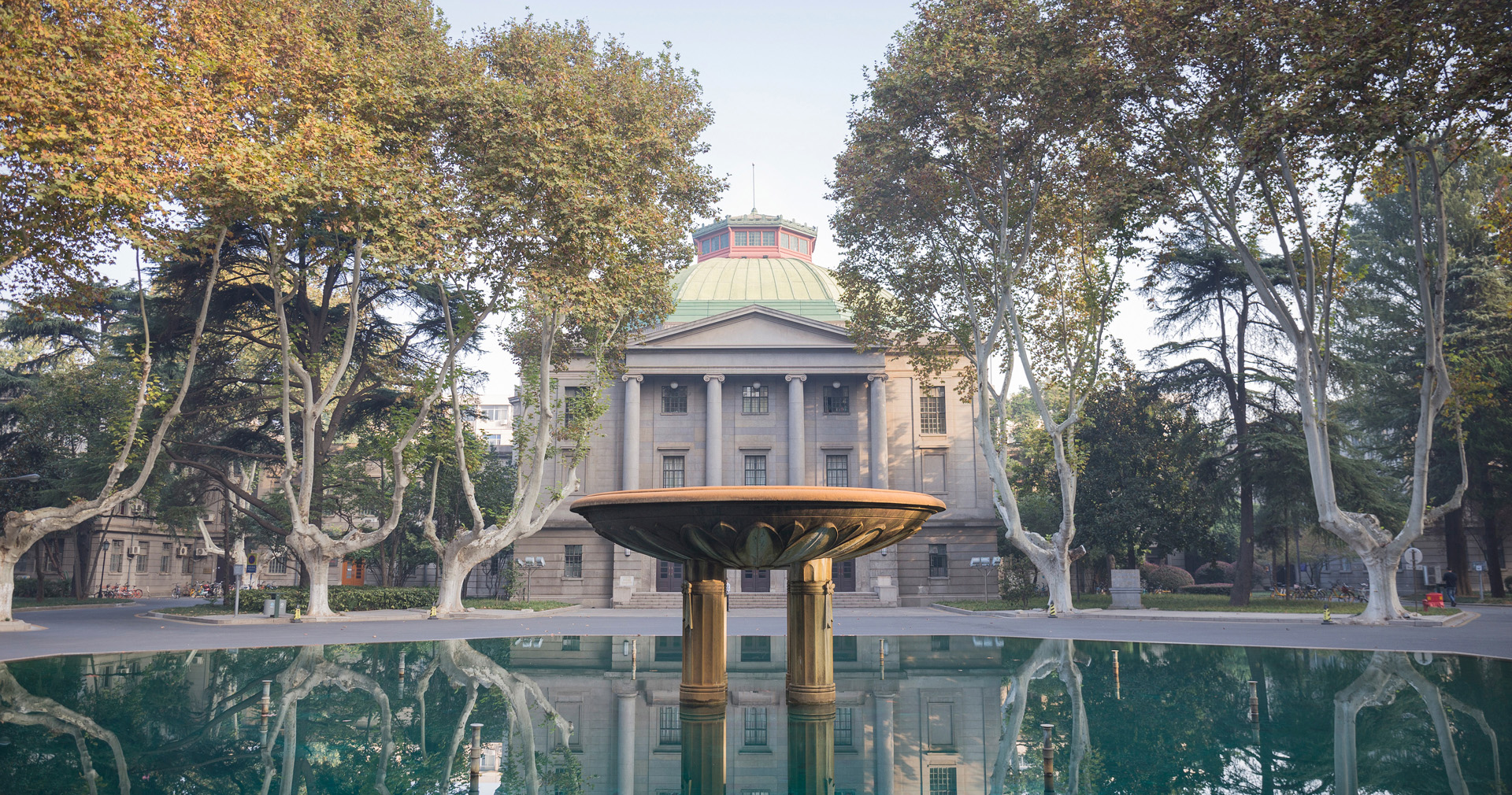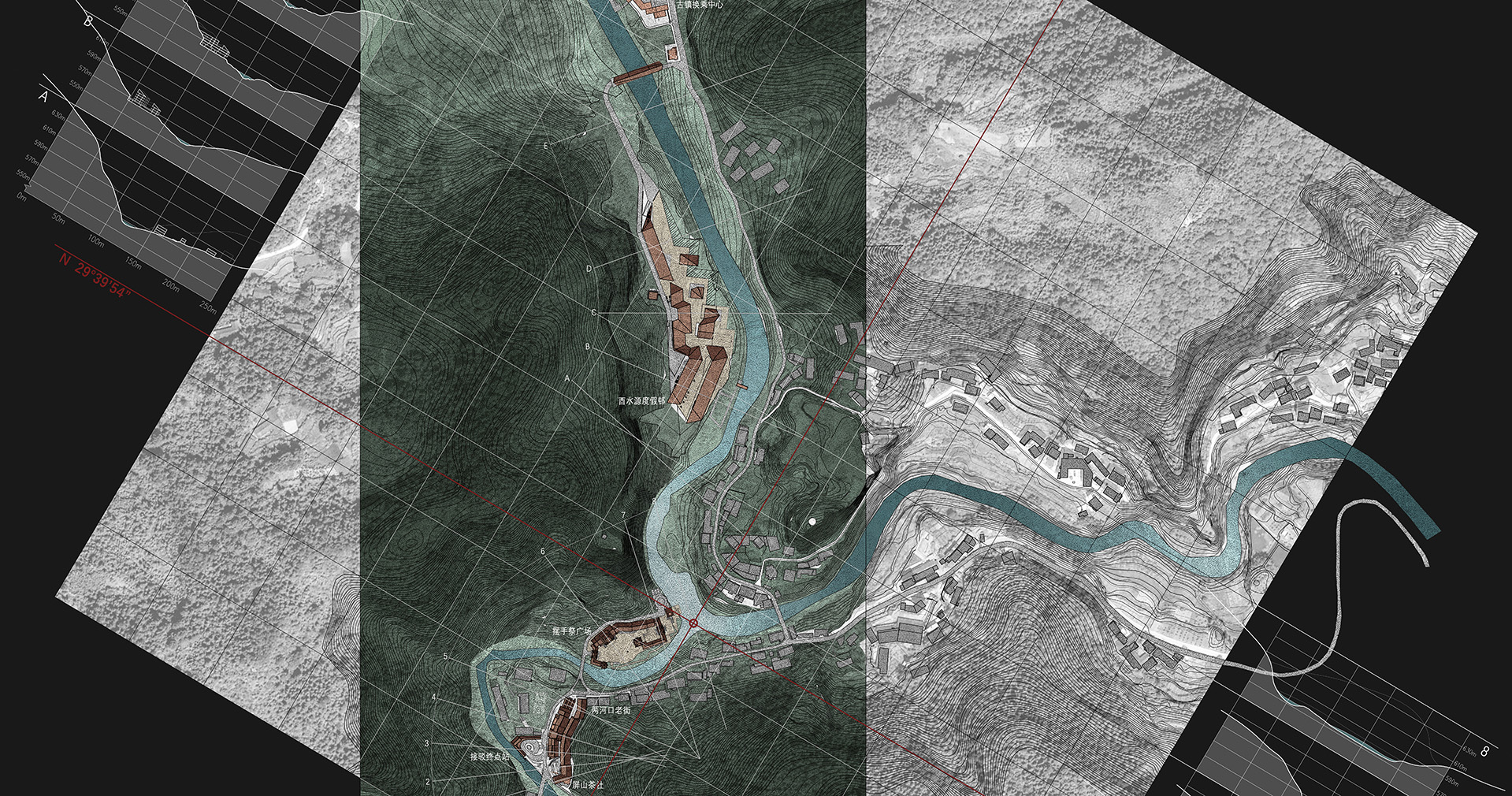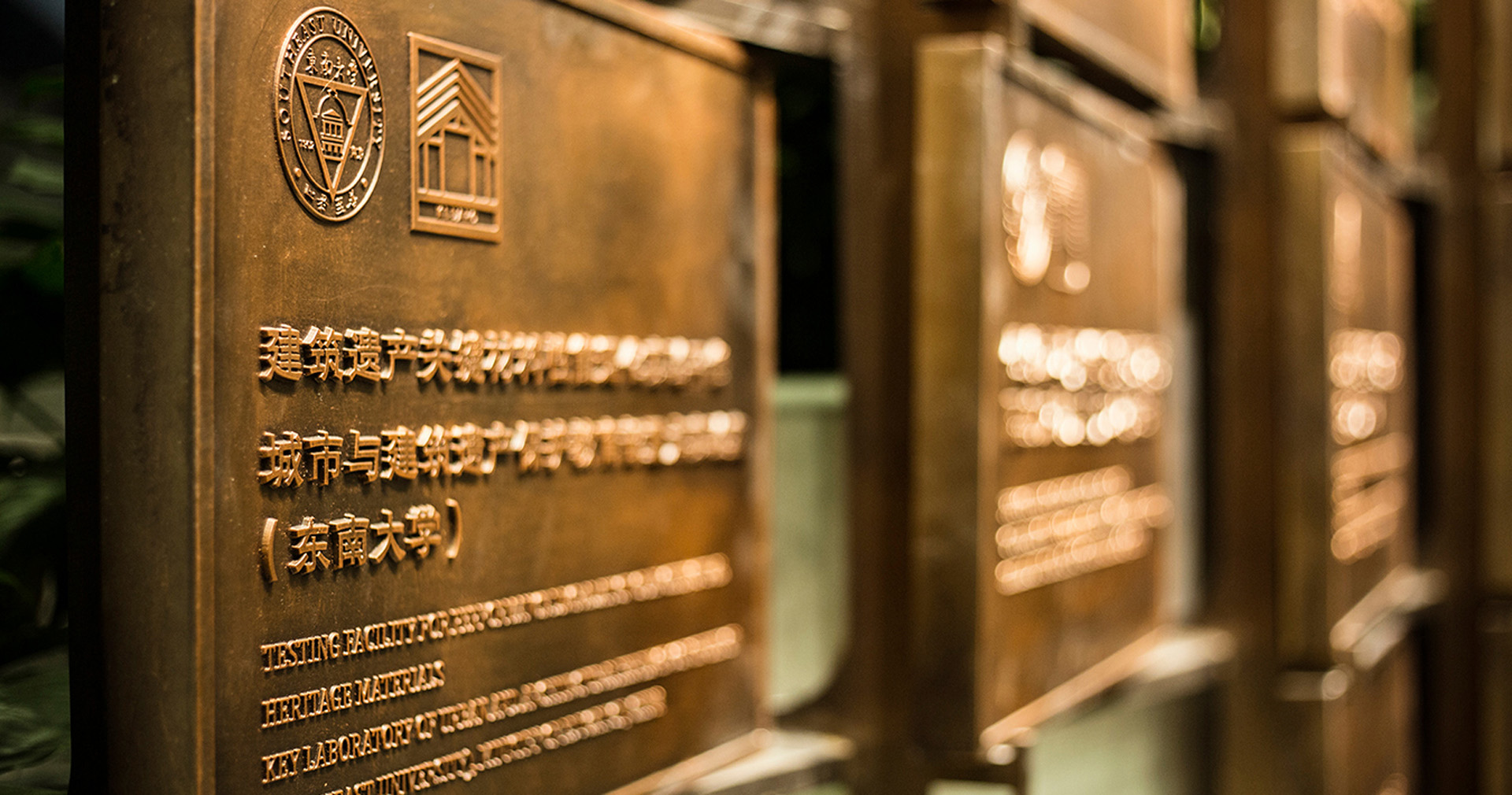
SEU-ETH: A joint teaching course of graphic statics
指导团队:Prof. Joseph Schwartz,张宏教授,CAO Ting,Pierluigi D'Acunto,Tellini Alessandro,李向锋,吴京,潘金龙,张军军
学生团队:向逸明,张敏,倪佳歆,沙楚翘,罗申,刘文辉,王冠军,刘珂羽,郑世丰,冒宇飞,谢予宸,季啸白,施惠文,周楚茜,唐哲坤,李淑琪,李东耘,尹维茗,陈婧涵,王昊龙,李梦玺,冉旭,陈庆
时间:2018年5月-2018年7月
东南大学建筑学院与瑞士苏黎世高等工业大学具有悠久的合作历史和深厚的合作友谊。今年5月份至7月份,约瑟夫·席沃兹教授团队与张宏教授团队合作在东南大学开设了图解静力学的联合教学课程,取得了丰硕的成果。
The school of architecture of Southeast university and the ETH have a long history of cooperation and profound friendship. In June this year, professor Joseph Schwartz team and professor Zhang Hong team set up a joint teaching course of graphic statics in Southeast university, which achieved fruitful results.

Picture from Team ETH
Graphic statics is a method of solving statics with vector graphics. One of its core principles is the parallelogram rule of force in physics, that is, the vector relation between component force and resultant force, which is transformed to the problem of common point three-force balance, such as the weight suspension problem, that is, the three balanced vector forces must be connected head to tail to form a closed multi-segment line. Professor Schwartz is one of the world's leading authority on graphic statics. He co-developed graphic statics on education and in practice, extending it from two-dimensional method to three-dimensional method, and combined computer technology to seek new development direction of the subject. Joseph Schwartz has been Full Professor of Structural Design at the Department of Architecture at ETH Zurich since February 2008. He was born in 1957 and obtained his Diploma in civil engineering from ETH Zurich in 1981 and his doctoral degree in 1989. His dissertation about nonlinear stability of masonry walls and reinforced concrete columns was awarded the ETH silver medal. Between 1989 and 1999 he lectured at several universities in Switzerland. From 2001 to 2008 he was professor at the Lucerne University of Applied Sciences and Arts. Furthermore, he is a co-author of the books Design of Concrete Structures with Stress Fields (1996) and Mauerwerk (1998). Prof. Schwartz was associate partner of a consulting office in Zug, Switzerland, from 1991 to 2001. As a project engineer he was responsible for the design of bridge and building structures. Since 2002 he is owner of a civil engineering office in Zug involved in the design of building structures in close cooperation with several leading Swiss architects. Prof. Schwartz is chairman of the Swiss structural masonry code committee.
This exhibit is one of the important achievements of the joint teaching between Southeast university and ETH. Dr Cao Ting is the main designer of the structure, assisted by Pierluigi and Alessandro. Their tutor, professor Schwarts, has been a professor of graphic statics at ETH school of architecture since 2008. This exhibit is part of the joint teaching program at Southeast university. In addition to teaching students about graphic statics, they worked with students and faculty of southeast university's school of architecture to build several structures based on graphic statics. Professor Zhang Hong from school of architecture of Southeast university and his workshop members played an important role in organizing and coordinating this joint teaching. Eighteen seniors from the school of architecture, Southeast university participated in the learning and construction process of the exhibit.
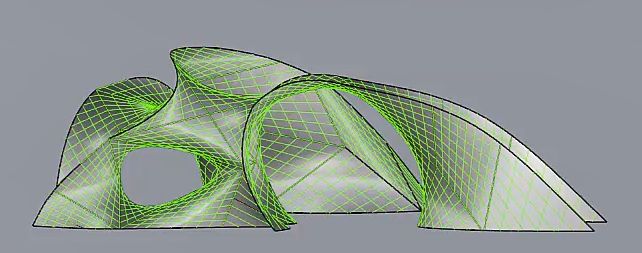
Picture from Cao Ting
This design is based on parabolic hyperboloid. As double curved and double ruled surfaces, hyperbolic paraboloids (hypars) allow for designing efficient structures to resist loads through forms and ensure a relatively easy construction method. Additionally, the various combinations of hypars could represent an effective operation for generating architectural forms that are able to respond to diverse spatial and programmatic necessities. Hypar-Based Form Making Method is developed to combine individual hypars into free-bending smooth surfaces which meanwhile envelope various architectural spaces. Hypar pavilion is a prototype designed with this form-making method. It is a grid shell combined from 40 hypars and fabricated with aluminum cubes and cables. It shows architectural spatial potentials and structural rigidities of shells designed with this form-making method.
Through this joint teaching, we realize the unique integration principle of morphology and mechanics of graphic statics, which has ushered in new life in the digital age. The hyperbolic pavilion based on graphic statics is constructed by prefabrication, which breaks the boundary between architecture and landscape with smooth shape, and realizes the combination of melody and straight. The clear and definite mechanical expression and excellent mechanical properties, on the one hand, achieve the unity of structure and form, on the other hand, have the potential to be used for building structure. The school of architecture of Southeast University is also carrying out research work on the concrete hyperbolic shell structure based on graphic statics theory, constantly enriching architectural education and research content, and cultivating architectural talents in the new era.

The following is the specific process of this joint teaching, there are five main parts:
1, Graphic static course
2, Construction of Pavilion
3. Construction of concrete shell structure
4. Experience in Nanjing
5, Rebuilding in Dezhou

01 教学阶段
The course was conducted by Dr. Cao Ting and Dr. Pierluigi D'Acunto from ETH, and it mainly includes the following contents:
1.cable, load bearing cable with stiffen cables, system of cable in space
2.arch, arch-cable, Compressive vaults, domes
3.Shells, Hypar
4.Hypar Tool introduction
5.Beam, Truss, Subsystem
Finally, they also gave a public lecture in the college. Dr. Cao Ting talked about the design of parabolic hyperboloids. Dr. Pierluigi D'Acunto shared his structural design experience based on graphical statics. Tellini Alessandro introduced Raplab's operational management.
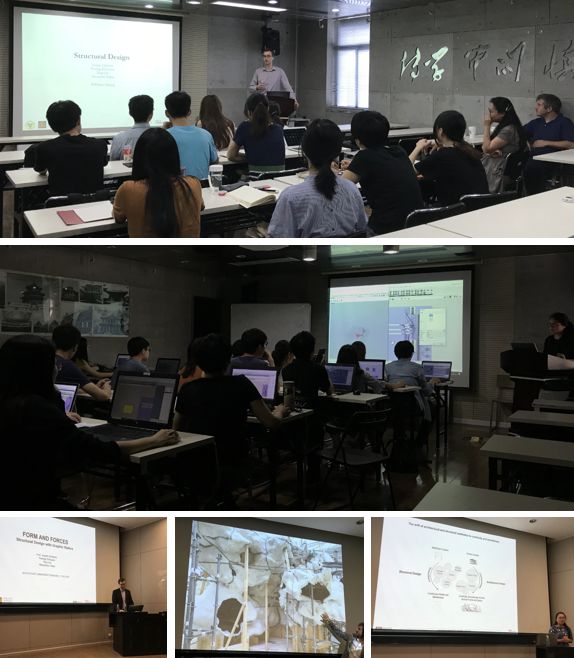
Picture from teaching team
02 双曲亭建造
The construction of Pavilion is mainly divided into four basic steps:purchasing materials, producing components, making hyperboloids and finally assembling. The main material aluminum tube is totally 2000 meters long and was purchased in Shanghai. 1mm thick aluminum plate was bought in Nanjing. Most of the rest of the materials were purchased online. Pavilion mainly consists of two standard components and one non-standard component. Among them, Among them, there are 1700 pieces of standard component aluminum pipe clips and 1000 pieces of standard swivel joints. In order to achieve rapid production, Zhang Junjun and Xiang Yiming designed and manufactured new tools to carry out standardization work according to the experience of ETH, and achieved high efficiency, high speed and high quality through the integration work of Xiang Yiming, Zhang Min and Ni Jiaxin. More than 800 non-standard length straight aluminum tubes were noted by undergraduates and cut by Wang Guanjun. In the process of cutting, Wang Guanjun found a good way to cut quickly and economically. The production of hyperboloids was done in groups of undergraduates. In an average of one hour a hyperboloid was completed with two people of each group. The final overall assembly was completed by the team as a whole under the leadership of Dr. Cao Ting and Dr. Zhang Junjun. The assembly was carried out from both ends to the middle and the closure was carried out at the largest arch. It was spectacular and the team realized their original goal.
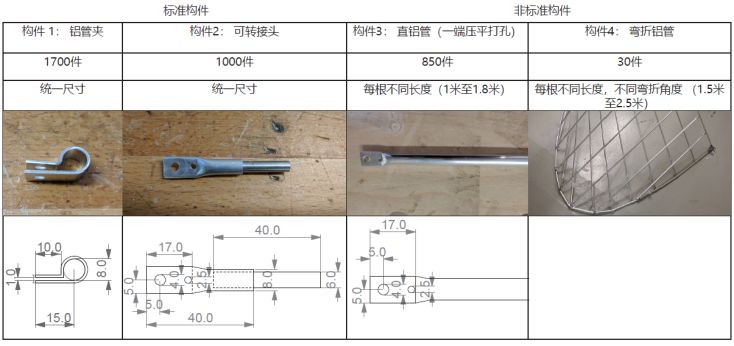
Picture from Cao Ting



Picture from Zhang Junjun
03 混凝土小品建造
Compared with Pavilion consisting of 40 hyperboloids, the concrete thin shell structure is composed of only 6 surfaces, but its construction process was much more difficult. We need to weld the steel frame first, then cover it with a wire mesh. Since the hyperboloid is a curved surface in two directions, it is very difficult to control when wrapping the wire mesh. We have visited the building materials market many times before we found a suitable wire mesh. The most difficult and most interesting thing was the spaying and molding of concrete. First of all, we need to mix the right proportion of fiber concrete. With the help of the team of Professor Zhang Yunsheng from the School of Materials, after many experiments, we finally got a relatively ideal concrete mix proportion. In addition, we also tried the concrete spaying machine for the first time. Although the result was not fully satisfying, the attempt was positive itself. Professor Zhang Hong from the School of Architecture in Southeast University has been working on architecture real-world construction, providing advantages for the real construction of this exhibition.
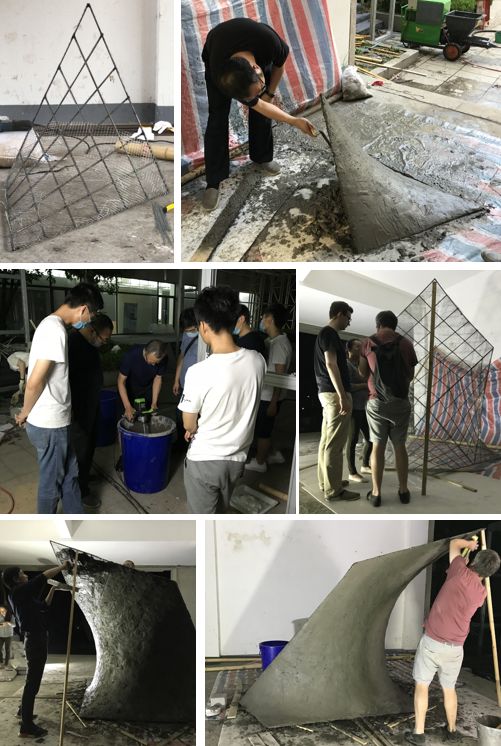
Picture from Zhang Junjun
04 体验南京
Despite the heavy task of teaching and construction, the team still led international friends to experience the beauty of ancient Nanjing. Pierluigi and Alexandro stayed in Lao Mendong for a long time and they thought that the ancient Chinese cities must be very interesting. They also discussed the historical significance of the Nanjing wall and the authenticity of the existing wall as well as the issue of heritage protection.
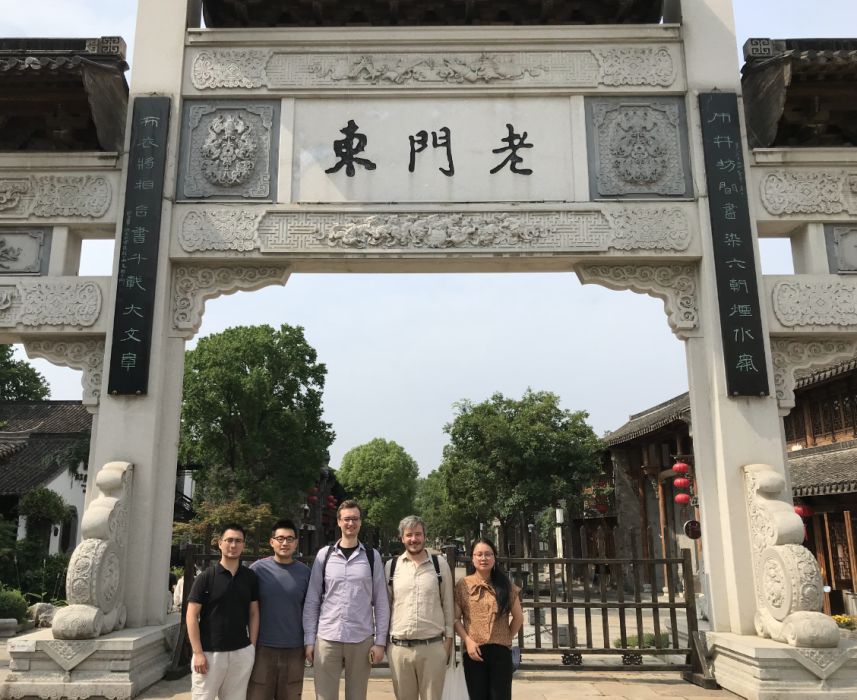

Picture from Zhang Junjun
05 德州再建
With the agreement of ETH , Professor Zhang Hong's team spent half a day to dismantle Pavilion on the grass in front of the courtyard in a planned way. Although the original exhibit was composed of 40 different hyperbolic paraboloids, considering the convenience of reassembly and the size limitation of transportation, we split it into 20 pieces, most of which including two surfaces , which can reduce the workload during reassembly. After effective advance planning of loading, the team made some simple support frames to transport these hyperboloids, which can protect the integrity of them and avoid deformation as far as possible.
In August, led by Dr. Zhang Junjunjun, with the help of Luo Shen, Xiang Yiming, Liu Wenhui, Li Mengxie, Maoyufei, Ranxu, Wang Haolong, Zhang Nuo and other students, the team rebuilt Pavilion on the site of Southeast University Team of SDC2018 in only five days. The elegant shape of Pavilion attracted many people's attention. Especially under the sunset, it presented a beautiful relationship of light and shadow, which created an unforgettable experience for the competition.


picture from Zhang Hong
After the completion of the joint teaching and construction, the team held a big celebration together. Professor Ge Ming,vice dean of the school of architecture, Professor Fang Lixin, Professor Chunqing, Professor Ganhao, Professor Pan Jinlong, Professor Wu Jing from the school of civil engineering, Professor Meng Xianchuan from Nanjing University, Associate Professor Liu Changchun from Suzhou University, engineer Pan Wenjia from Housing and Urban-Rural Construction Department of Jiangsu Province attended the ceremony.
Due to the successful experience of this joint teaching, we all look forward to the next cooperation as soon as possible to promote the development of graphic statics in China.


Picture from teaching team
文字:张军军 曹婷 倪佳歆
排版:张敏


